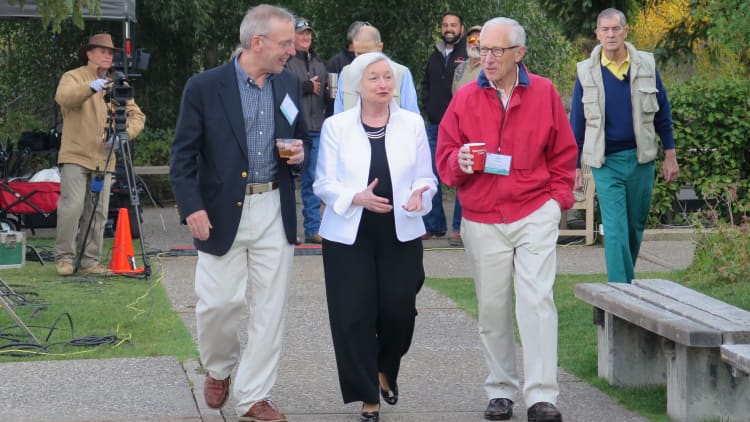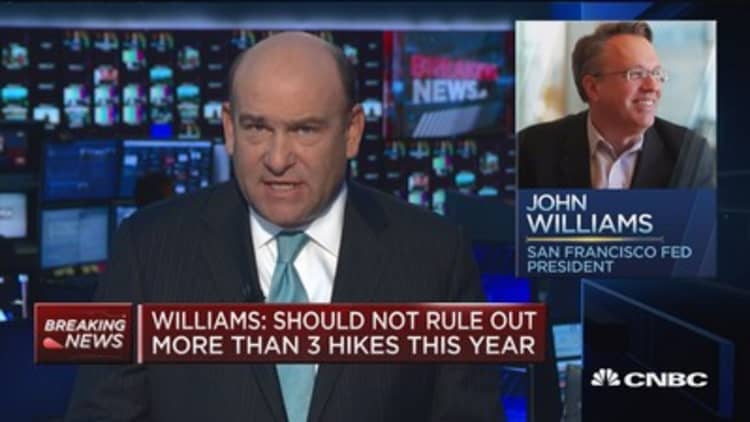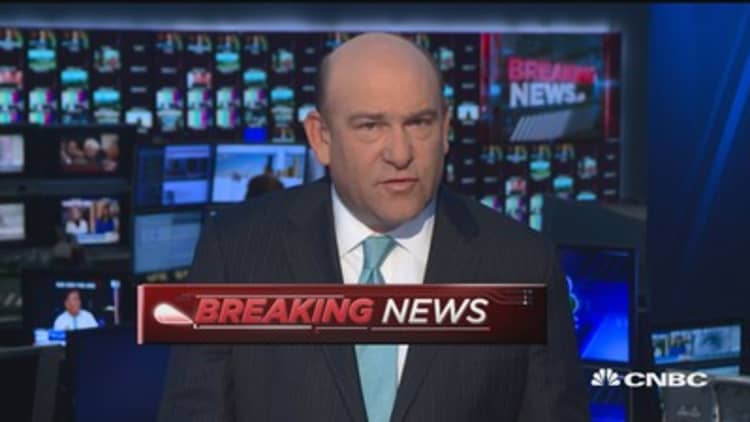
With little fanfare, the U.S. Federal Reserve could reach a very big milestone Friday on the road to normal.
That is because, in the eyes of some, the Fed will have reached its target inflation rate. On Friday, the headline personal consumption expenditures inflation data is expected to come in at 2 percent year-over-year.
The arrival of a healthier inflation rate is important, since the Fed has worried since the 2008 financial crisis that the bigger problem would be price deflation. Now, the concern of some in markets is that inflation will continue to pick up, and the Fed could be forced to move even faster with higher interest rates.
The PCE deflator is the Fed's preferred inflation measure, over the more well known consumer price index. Some would argue the Fed watches core inflation, without food and energy, but a headline inflation number at the Fed's target could still be seen as a turning point and as an impetus for the Fed to continue raising rates.
"It's finally going to get to 2 percent for the first time since April 2012. There's some upside there that may stir some peoples' views on the Fed. Last week, people started taking the Fed [hikes] out again, because there were low expectations we're going to get fiscal policy. If people start looking at inflation being already over target, there's maybe a reconsideration of expectations for the Fed," said Tom Simons, money market economist at Jefferies.
The market expectations for Fed rate hikes have bounced around, but many Fed watchers now see two more rate hikes for 2017, as the Fed has forecast. However, some Fed officials this week have suggested there could be even more rate hikes this year. There is also the opposite view among some market pros that there could be fewer, due to last week's failure by Republicans to pass a health care bill, which is seen by some as a sign that there could be less fiscal stimulus than expected.
"It should be a wakeup call," said Diane Swonk, CEO of DS Economics. "They have to meet the core, but the reality is we're moving in the right direction, and the core is within spitting distance. They have to take into account that monetary policy works with a lag." The core PCE deflator is expected at 1.7 percent, unchanged from last month.

The Fed has raised interest rates three times in the past 10 years, reversing its zero rate policy after seven years in 2015. In the years since the financial crisis, the Fed has targeted an inflation rate of 2 percent.
"It went from being implicit to explicit," said Swonk. "They wanted to show the Fed could reflate the economy."
Inflation is one of the Fed's two mandates, as it is tasked with maintaining price stability. The other mandate is full employment, and with unemployment at 4.7 percent, some economists believe the job market is nearly as good as it will get.
Signs of inflation have been showing up in other metrics and in wages, so some market pros are critical of the Fed's pace of interest rate hikes.
"It's surely a game of semantics," said Peter Boockvar, chief market analyst at Lindsey Group. "Core CPI has been above 2 percent for 15 straight months, and you'll have people like [Chicago Fed President Charles] Evans saying they're not at their target." Evans is viewed as a dovish member of the Fed.
"Even at 1.7 percent (core), they can check off some of that [inflation] box. They're pretty much there when you reach your mandate of 2 percent inflation, which is a made up number," he said. "The Fed is essentially meeting their internal mandate. They should be at a 3 percent [fed funds rate] today. It just tells you they dragged their feet … They find themselves way behind where they should be."
The target range for the fed funds rate is 0.75 to 1 percent.
Swonk said the market may be puzzled when it sees the inflation numbers perk up but PCE consumer spending rising just slightly, up 0.2 percent, after a surge in consumer spending in fourth quarter GDP.
"You're going to get a hot inflation number and weak consumption number. When it's 70 degrees in Chicago in February, we don't consume any heat," Swonk said.
The PCE data is released at 8:30 a.m. There is Chicago PMI data at 9:45 a.m. Friday and consumer sentiment at 10 a.m. Boockvar said sentiment could be important since this week's strong consumer confidence was measureprior to the failure of Congress to vote on health care last week.
Fed speakers include Minneapolis Fed President Neel Kashkari at 10 a.m., and St. Louis Fed President James Bullard at 10:30 a.m.
Watch: Evans on possibility of more hikes



